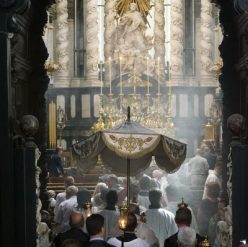OLM stands for Ordo Lectionum Missæ.
The Ordo Lectionum Missæ (editio typica altera. Vatican City, Typis Polyglottis Vaticanis, 1981)
is the official second edition of the Order of Readings for Mass in Latin,
promulgated on January 21, 1981.
It corrected most of the typographical errors of the previous edition of 1969,
but also incorporated many other changes and additions to the Lectionary.
According to Rev. Fr.
Felix Just,
S.J., Ph.D,
the OLM of 1981 and the revised Lectionaries based upon it are sometimes referred to as
second generation liturgical texts.
